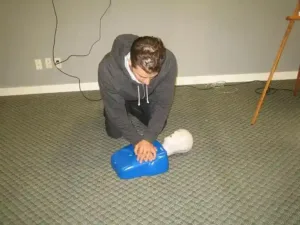Getting trained in cardiopulmonary resuscitation and first aid is one of the most basic requirements when applying for a job, especially jobs that involve some form of high-risk activity. There is a variety of training courses you can get at this provider, programs that are based on the training guidelines from the American Heart Association (AHA). Finding the program that suits your needs won’t be difficult with the large selection of classes and schedules available.
There are more details provided on the provider website, including information on how to sign up for a training program, a complete calendar on available class schedules, and contact information.
What courses are available?
Trainees who sign up with this provider can choose from different programs on CPR: BLS, CPR and first aid, ACLS, and PALS
Basic Life Support (BLS)

The basic CPR program is under the Basic Life Support program. BLS refers to the set of guidelines and information periodically released by the American Heart Association to update the existing guidelines on CPR and management and treatment of cardiovascular and pulmonary problems. BLS covers the chain-of-survival, the steps followed when rescuing a victim of cardiac arrest.
There are two kinds of CPR program under the BLS program, (1) CPR for the general public and (2) BLS for healthcare provider. First program is 4 hours long and the second is 4–4 and a half hours long.
CPR and First Aid
As part of the concept of ECC – Emergency Cardiovascular Care – concept by the AHA, this program includes both CPR and first aid training. This basically teaches students CPR for the general public and basic first aid skills, especially how to deal with choking injuries, which compromise the airway and breathing. CPR training is 4 hours long.
Advanced Cardiac Life Support

The ACLS program is designed primarily for health care providers who work directly with patients, such as nurses, doctors, nursing aids, and most people who work in a hospital or clinic. The ACLS concentrates on performing CPR in the health care setting – complete with a crash cart training. The entire programs runs for 16 hours. Students who want to sign up for ACLS classes need to have a BLS for health care providers completion card or certificate and pass a skills test and written exam.
Pediatric Advanced Life Support
The PALS program is very similar to ACLS but focuses on different pediatric victims instead of adults. Variations of performing CPR on infants, toddlers, and younger children are part of the program’s curriculum. However, unlike ACLS which is designed towards health care providers, PALS can be taken by health care students seeking PALS certification as well as health care providers. This program is also shorter – 14 hours. BLS for health care providers certificates are still a requirement for this program.
When do I get certified?
Once you pass the final skills test and the written exam, a completion card or certificate is awarded to you. The certificate is only valid for two years. Certain programs have renewal classes available but others don’t, so the whole program needs to be taken again. The programs with available renewal classes are:
- BLS for health care providers – 4 hours
- ACLS – 5 to 6 and a half hours
- PALS – 8 hours and 20 minutes (with optional stations) or 6 hours and 20 minutes (without optional stations).
